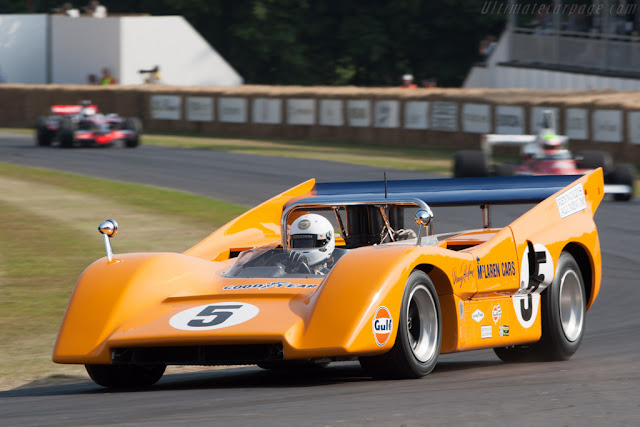
The M8D gave his team one of its best years in Can-Am. Rallying superbly after the tragedy, McLaren took nine wins from 10 rounds, and Denny Hulme took his second title despite driving with his hands still bandaged after the fire in the M15 at Indianapolis.
The M8D differed visually from the M8B. With new rules banning the strut-mounted wings that had proliferated in 1969, the solution at McLaren comprised a pair of tail fins which acted as fences to channel airflow over a wide, low-mounted wing located eight inches above the rear bodywork. The distinctive appearance earned the car the nickname 'the Batmobile'. It was less efficient aerodynamically without the M8B's high wing, so to maintain performance the team sought even greater horsepower. A new deal with Reynolds Aluminium gave it access to that company’s new silicon-aluminium Chevrolet blocks, 8-litre versions of which were said to be capable of producing 700bhp. In the interest of reliability a slightly smaller 7.6-litre was chosen, giving 670bhp.
In 1970, on that tragic day in Goodwood, Bruce McLaren pulled in and out of the pits for adjustments to the rear wing in a bid to avoid overseer. At 12.19 he left the pits for the last time. In a fast left-hand kink leading on to the main straight part of the tail section lifted at 170mph, causing the car to spin. It struck a marshals’ protective embankment on the right-hand side of the track with enormous impact. Bruce was thrown from the wreckage, and killed instantly.
Source: McLaren


Comments
Post a Comment